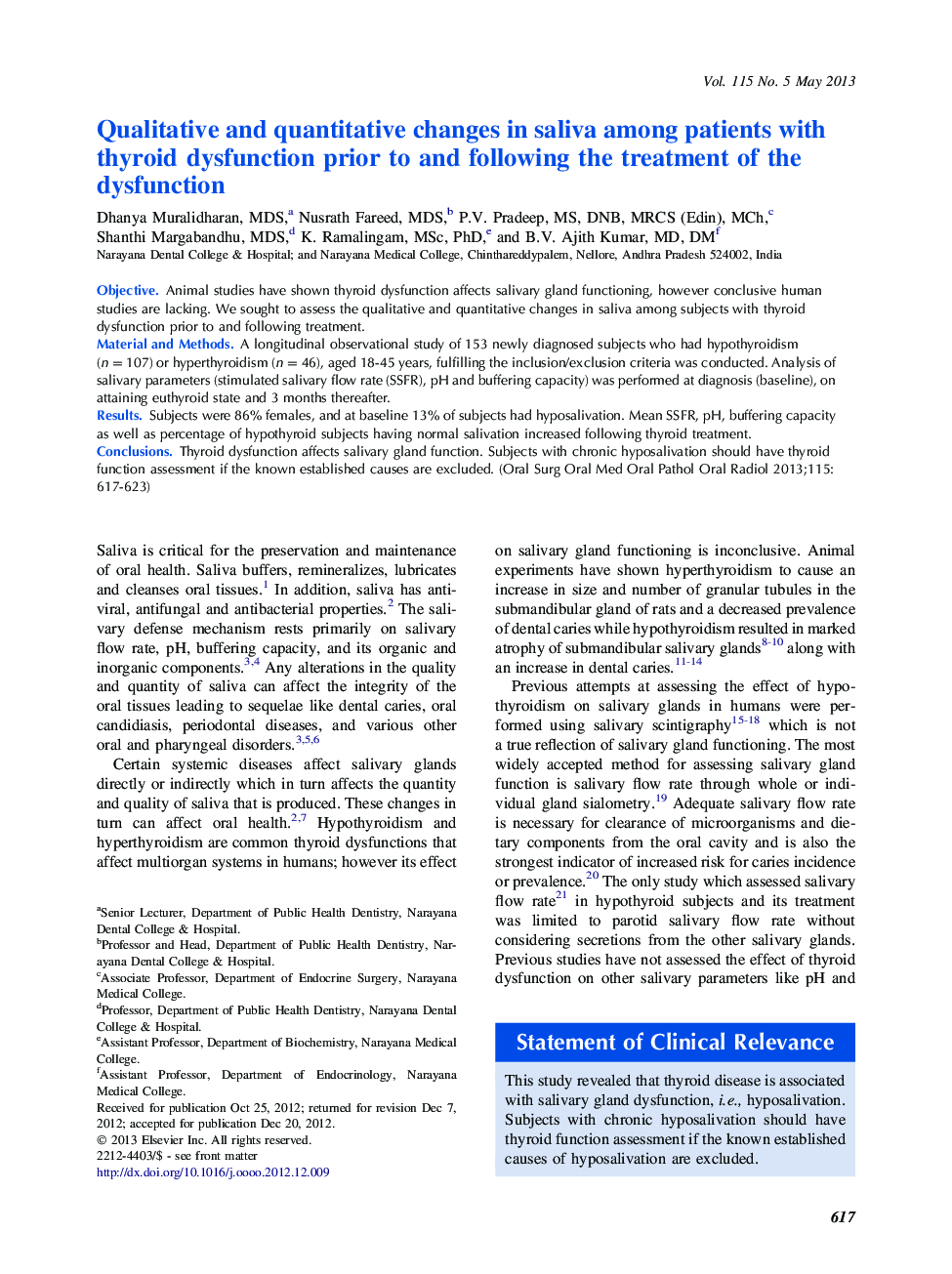| Article ID | Journal | Published Year | Pages | File Type |
|---|---|---|---|---|
| 6057786 | Oral Surgery, Oral Medicine, Oral Pathology and Oral Radiology | 2013 | 7 Pages |
ObjectiveAnimal studies have shown thyroid dysfunction affects salivary gland functioning, however conclusive human studies are lacking. We sought to assess the qualitative and quantitative changes in saliva among subjects with thyroid dysfunction prior to and following treatment.Material and MethodsA longitudinal observational study of 153 newly diagnosed subjects who had hypothyroidism (n = 107) or hyperthyroidism (n = 46), aged 18-45 years, fulfilling the inclusion/exclusion criteria was conducted. Analysis of salivary parameters (stimulated salivary flow rate (SSFR), pH and buffering capacity) was performed at diagnosis (baseline), on attaining euthyroid state and 3 months thereafter.ResultsSubjects were 86% females, and at baseline 13% of subjects had hyposalivation. Mean SSFR, pH, buffering capacity as well as percentage of hypothyroid subjects having normal salivation increased following thyroid treatment.ConclusionsThyroid dysfunction affects salivary gland function. Subjects with chronic hyposalivation should have thyroid function assessment if the known established causes are excluded.
